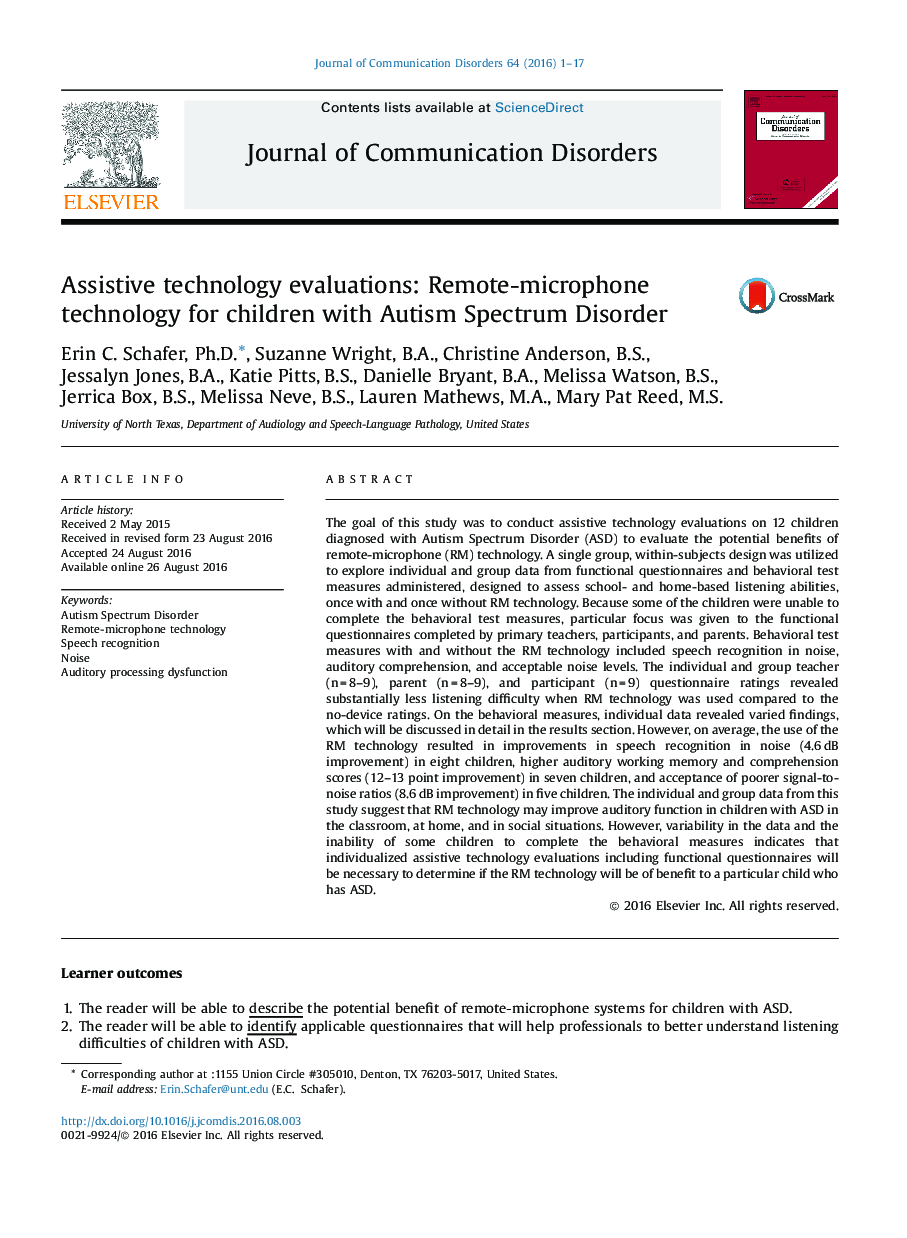| کد مقاله | کد نشریه | سال انتشار | مقاله انگلیسی | نسخه تمام متن |
|---|---|---|---|---|
| 5039123 | 1473092 | 2016 | 17 صفحه PDF | دانلود رایگان |
- RM system improved speech recognition for most children with ASD relative to no RM system.
- Teacher, participant, and parent questionnaires revealed significant improvements in auditory behaviors with the RM system.
- Individual functional evaluations will be necessary to determine the benefit of an RM system for a particular student.
The goal of this study was to conduct assistive technology evaluations on 12 children diagnosed with Autism Spectrum Disorder (ASD) to evaluate the potential benefits of remote-microphone (RM) technology. A single group, within-subjects design was utilized to explore individual and group data from functional questionnaires and behavioral test measures administered, designed to assess school- and home-based listening abilities, once with and once without RM technology. Because some of the children were unable to complete the behavioral test measures, particular focus was given to the functional questionnaires completed by primary teachers, participants, and parents. Behavioral test measures with and without the RM technology included speech recognition in noise, auditory comprehension, and acceptable noise levels. The individual and group teacher (n = 8-9), parent (n = 8-9), and participant (n = 9) questionnaire ratings revealed substantially less listening difficulty when RM technology was used compared to the no-device ratings. On the behavioral measures, individual data revealed varied findings, which will be discussed in detail in the results section. However, on average, the use of the RM technology resulted in improvements in speech recognition in noise (4.6 dB improvement) in eight children, higher auditory working memory and comprehension scores (12-13 point improvement) in seven children, and acceptance of poorer signal-to-noise ratios (8.6 dB improvement) in five children. The individual and group data from this study suggest that RM technology may improve auditory function in children with ASD in the classroom, at home, and in social situations. However, variability in the data and the inability of some children to complete the behavioral measures indicates that individualized assistive technology evaluations including functional questionnaires will be necessary to determine if the RM technology will be of benefit to a particular child who has ASD.
Journal: Journal of Communication Disorders - Volume 64, NovemberâDecember 2016, Pages 1-17
